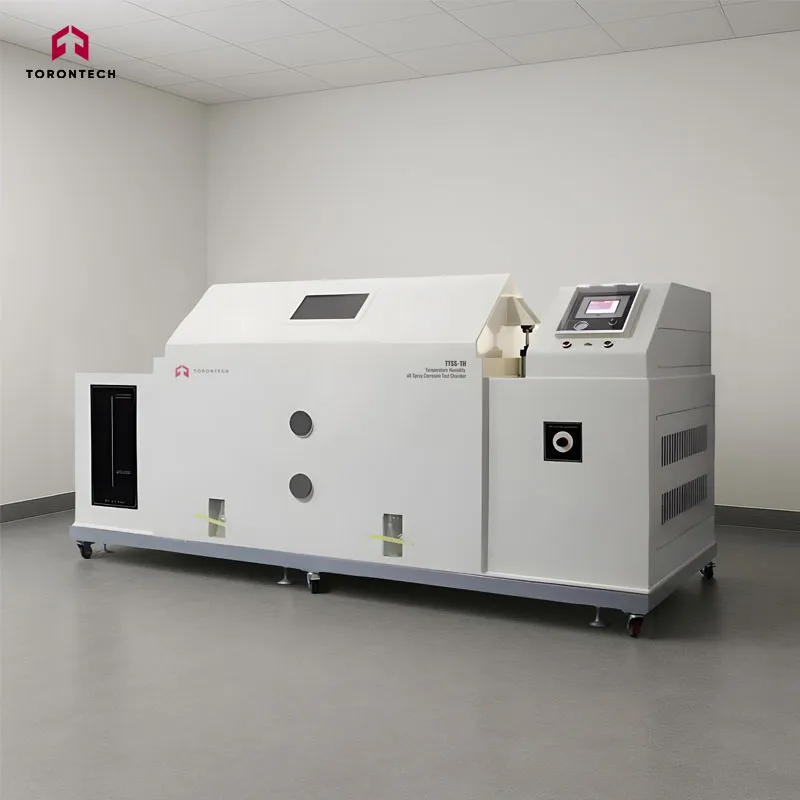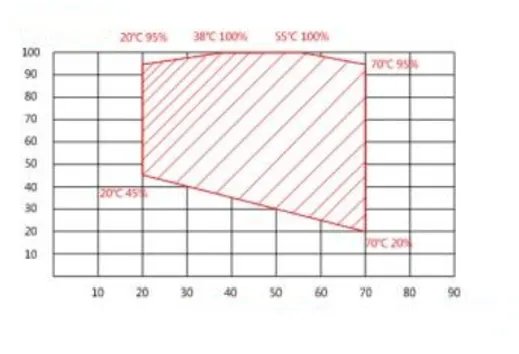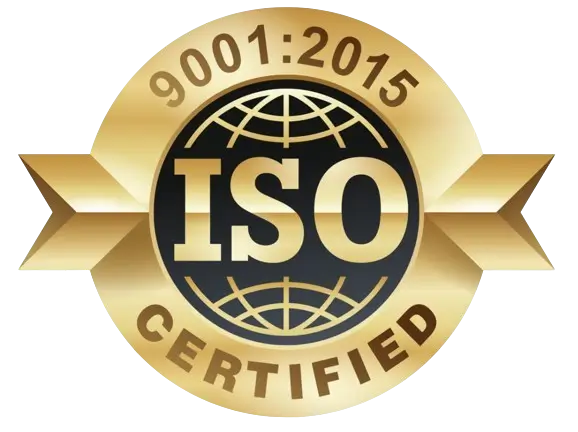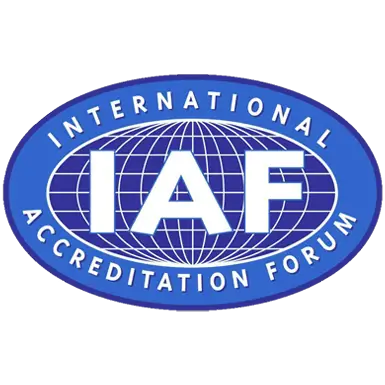Temperature Humidity Salt Spray Corrosion Test Chamber
Temperature Humidity Salt Spray Corrosion Test Chamber, whether protected or unprotected, is influenced by various environmental factors. The primary determinants are the type of metal and the environmental conditions. While it is not feasible to design a laboratory test chamber that accounts for every factor affecting corrosion, this equipment is specifically designed to simulate and enhance the key environmental effects responsible for corrosion in outdoor settings with salt contamination.

Performance indicators and structural systems
-
Environmental Control Capabilities:
- Indoor space heating
- Humidification
- Dehumidification
- Spraying
- Defogging
-
Precise Condition Adjustment:
- Achieves the set temperature, humidity, and spray volume based on the configured parameters for temperature, humidity, and salt spray.
-
Independent Operation:
- Each function can be operated independently, providing flexibility for varied testing requirements.
This functionality ensures precise environmental simulation and adaptability for diverse testing scenarios.
Meet test standards
This advanced testing equipment is designed to meet a wide range of international and national standards, ensuring its suitability for diverse industries and applications.
Supported Test Standards:
-
Salt Spray Testing:
- ASTM B117-2016
-
Coating Corrosion Testing:
- SAE J2334
-
Artificial Atmosphere Corrosion Testing:
- ISO 9227-2006
-
Automotive Corrosion Testing:
- GMW-14872
-
Salt Spray and Sodium Chloride Tests:
- IEC 60068-2-52-2017
- IEC 60068-2-11-1982
-
Military Equipment Testing:
- MIL-STD-810 Method 509.5
- GJB 150.11A-2009
-
Dry and Wet Salt Spray Testing:
- GB/T 20854-2007 / ISO 14993-2001
-
Environmental Test Equipment Inspection:
- GB-T 5170.8-2008
-
Constant and Alternating Humidity & Heat Testing:
- GBT 2423.3-2006 (IEC 60068-2-78-2001)
- GB-T 2423.4-2008
-
Salt Spray Testing for Electrical Equipment:
- GBT 2424.17-2008
- GB-T 2423.18-2021
-
Cyclic Accelerated Corrosion Testing:
- GB/T 24195
-
Artificial Atmosphere Corrosion Testing:
- GBT 10125-2021
Temperature/humidity range
Temperature range:10℃~80℃
Humidity range:20~100%R.H(as below)

Control accuracy
Temperature resolution: 0.01℃, Humidity resolution: 0.1%R.H
Temperature deviation: ±1.0℃, Humidity deviation: ±2%R.H
Temperature uniformity: ±2℃ Humidity uniformity ±3%R.H
Temperature fluctuation: ±0.5℃ Humidity fluctuation: ±2%R.H
Heating rate
RT→+70℃≤60 min
RT→+0℃≤30 min
Salt spray (35℃)→drying (60℃.20~30%RH)≤30 min
Dry (60℃, 20~30%RH)→humidified (50℃, 95%+/-5%RH)≤15 min
Humidity (50℃, 95%+/-5%RH)→salt spray (35℃)≤30 min (spray is required immediately after switching)
Chamber structure
-
Test Chamber:
- Material: PP (Polypropylene) board
- Thickness: 10 mm
- Temperature Resistance: Up to 100℃
-
Exterior:
- Material: PP (Polypropylene) board
- Thickness: 10 mm
- Temperature Resistance: Up to 100℃
-
Sealing Cover:
- Material: 10 mm PP polypropylene plate
- Features: One-touch automatic opening with a transparent observation window and integrated defogging device for clear test monitoring.
- Temperature Resistance: Up to 100℃
-
Test Solution Refill Bottle:
- Material: PP polypropylene board
- Features: Hidden water level meter and reagent inlet for saltwater filling. The solution is transferred via a pipeline to the internal brine tank without opening the lid.
-
Humidification Water Tank:
- Material: PP polypropylene board
- Features: External placement with a hidden water level meter and a water purifier at the inlet to filter impurities.
-
Saturated Barrel:
- Material: PP pipe
- Features: Superior insulation, corrosion resistance, and ability to create moist, clean compressed air. Air passes through an air saturation generator for filtering and temperature balance.
- Water Replenishment: Manual and automatic options.
-
Tempering Chamber:
- Material: Titanium metal
- Features: Corrosion-resistant, high temperature tolerance, and long service life.
-
Insulation Material:
- Polyurethane hard foam layer ensures efficient thermal insulation.
-
Base Structure:
- Material: Channel steel coated with paint and covered with plastic PP grooves.
- Features: Equipped with mobile casters for portability.
-
Air Duct:
- Features: Specially designed sealed damper device allows automatic switching between salt spray and temperature/humidity tests.
This design ensures a robust, efficient, and user-friendly setup, tailored for diverse testing needs while maintaining durability and precision.
Air Circulation system
The built-in air chamber and stainless steel circulation fan ensure consistent airflow. The air is distributed through a damper and diffuser, channeling it uniformly into the mixing chamber. This process adjusts the temperature and humidity, evenly distributing them throughout the test space, achieving precise and uniform environmental control.
Control Panel
LCD touch programmable controller, power switch, spray indicator light, operation indicator light, fault indicator light, RS-232 communication interface, USB, Ethernet
Blending room
Humidifier, dehumidification device, heater, circulating fan, drainage device, water supply device, water level controller, over-temperature protector, humidification pipe anti-dry device, circulating air duct, damper
Circuit part
Main power circuit breaker, controller, distribution board, cooling fan, over-temperature protector
Heating system
- Blending Room: Equipped with a titanium alloy heater and a circulating fan to ensure robust air circulation. Heating is controlled via P.I.D (Proportional-Integral-Derivative) technology, maintaining precise temperature balance.
- Test Room: Features a titanium alloy heating tube for direct air heating. The P.I.D system adjusts heating output for consistent temperature stability.
- Pressure Barrel: Utilizes a titanium alloy heating tube with a water-based heating method. Compressed air enters the heated water and disperses as bubbles. The P.I.D controller ensures constant temperature, producing pure gas for accurate spraying processes.
This system design delivers optimal performance with precise temperature control and efficient heat distribution.
Humidification and dehumidification system
The system utilizes a water vapor humidification method to achieve the desired humidity levels. A compressor handles the dehumidification process, while a P.I.D (Proportional-Integral-Derivative) controller precisely regulates the humidification output. This ensures consistent and accurate humidity control tailored to the test requirements.
Water Supply Specifications and Methods
- Water Quality Requirements: The water must meet second-level quality standards of the National Analytical Laboratory, with a solid impurity content of less than 1 mg/L.
- Water Supply Method: Offers a dual-mode water supply system—automatic and manual. The automatic water inlet is equipped with a built-in water purifier to ensure high-quality water supply.
This configuration ensures reliable and contamination-free operation for precise experimental conditions.
Compressed air supply system
-
Air Supply System:
- Air Compressor → Primary Oil-Water Separator: Filters out oil and water impurities.
- Pressure Reducing Valve: Regulates initial air pressure.
- Main Solenoid Valve → Secondary Oil-Water Separator: Further purifies the air.
- Saturator → Pressure Regulating Valve → Spray Solenoid Valve → Nozzle: Delivers clean and regulated air for precise spraying.
Note: The air compressor is optional and not included in the standard machine configuration.
-
Spray Pressure Adjustment:
- First Adjustment: Compressed air is set to 0.2–0.3 MPa.
- Second Adjustment: Spray pressure is fine-tuned to 0.07–0.17 MPa.
This ensures the pressure sprayed through the nozzle is within the required range for accurate and consistent results.
Spray and defogging system
Spray Control
- Programmed Automatic Spray: The spray process is controlled via programmed automation, ensuring consistent and precise test conditions.
Spray Volume Collector
- Design: Equipped with two conical funnels (diameter: 100mm).
- Placement:
- One funnel is near the spray tower.
- The other is farther away to ensure uniform spray distribution throughout the test chamber.
- Real-Time Monitoring: Funnels are connected via silicone hoses to outdoor measuring cylinders, allowing real-time spray volume checks for test accuracy.
Spray Device
- Central Placement:
- The saltwater spray device is located at the center of the test chamber.
- Water Supply Tank:
- Positioned at the bottom of the spray device.
- Includes a corrosion-resistant automatic water-level float to regulate the water level automatically.
- Spray Nozzle:
- Positioned 100mm above the water tank to maintain the correct siphon height.
- Fitted with a CPVC round pipe extension to prevent incomplete atomization or direct salt water spray on samples.
- Spray Tower: A cone-shaped tower above the round pipe allows spray volume adjustment by varying its height.
Defog Control
- Automated Defogging: Operates based on program settings.
- Defogging Method:
- Compressed air fills the chamber to flush out the fog, ensuring quick and effective clearing.
Spray Principle
- Benoit Principle:
- Salt water is absorbed and atomized uniformly, avoiding crystallization or blockage.
- Ensures a standard spray pattern for consistent and uninterrupted testing.
- Nozzle Material: Made from special glass, adjustable for both spray volume and angle.
Cycle Working Mode
- Modes: Independent controls for drying, humidifying, and salt spray tests.
- Salt Spray Test: Automatically disables dry and wet control systems.
- Dry/Wet Test: Switches via damper to disable salt spray operations.
- Intelligent TS Time Signal Control:
- Supports periodic or continuous spraying.
- Automates cycles for drying, moist heat, and salt spray processes.
Test Material Rack
- Adjustable Frame:
- Installed on the inner walls of the PVC polyethylene triangular groove box.
- Allows arbitrary angle adjustments for the test pieces.
- Ensures consistent fogging and defogging on all sides.
- Accommodates a large number of samples.
- Placement Platform:
- Located at the bottom of the chamber, made of perforated PP plates for quick drainage.
- Suitable for large samples.
Electrical control system
Controller Type
- LCD Touch Screen Controller
- Independently controls temperature, humidity, salt spray, and drying functions.
Screen Display Features
- Direct Display: Shows temperature and humidity settings (SV) and actual values (PV).
- Execution Status: Displays program number, segment, remaining time, number of cycles, and runtime.
- Program Display:
- Editing and graphic curve display.
- Execution program curve visualization.
- Dedicated Editing Screen:
- Each page supports up to 4 segments for temperature, humidity, and time settings.
- Fixed-point or program status display.
- Adjustable Backlight:
- Set backlight intensity and scheduled or manual backlight time.
- Includes screen protection with scheduled or manual shutoff.
- Language Support: English and other.
- Screen Size: 7-inch true-color display.
Program Capacity
- Maximum Programs: 120 groups, each with 1–99 segments.
- Memory Capacity: 1,400 segments.
- Repeatable Commands: Each command can execute up to 999 times.
- Linked Programs: Allows combining programs for extended operations.
- Timing Signals: 3 sets (TS1–TS3).
- Segment Time: Configurable from 1 minute to 999 hours.
Control Functions
- Program Editing: Includes editing, clearing, and inserting capabilities.
- Output Control: 2 sets of time signal outputs to control the ON/OFF actions of test objects.
- PID Parameters: 9 sets of adjustable PID parameter settings.
- Skip/Hold: Ability to skip or hold segments during execution.
- Power-Off Memory: Resumes program execution after power restoration.
- Copying and Linking: COPY, connection, and editing experiment titles.
- Data Management: Collects, exports, and views test data and graphic curves.
Advanced Features
- PID Automatic Calculation: Includes FUZZY control for precision.
- Time Adjustment: Date and time settings available.
Communication Interface (RS-232)
- Data Display: Visualize curves and collect data.
- Remote Monitoring: Supports monitoring and remote control systems.
Storage Features
- Internal Memory: 2GB capacity; stores test data directly without requiring a computer.
- Printing: Print test data and curves via computer.
Standby Mode
- Power Saving: View pictures during standby mode.
Performance Adjustments
- Temperature Range: Adjustable from upper limit +5℃ to lower limit -5℃.
- Display Resolution:
- Temperature: 0.01℃
- Time: 0.1 min
- Humidity: 0.1% R.H
Control Methods
- Sensor: PT100 platinum resistance.
- PID Control: Anti-integral windup for precise adjustments.
- Control Modes:
- BTC (Balance Temperature Control for temperature tests).
- BTHC (Balance Temperature and Humidity Control for combined tests).
Curve Recording Function
- Battery-Backed RAM: Stores device settings, sampling values, and times.
- Recording Time: Up to 60 days with a sampling period of 1.5 minutes.
Troubleshooting and Auxiliary Functions
- Fault Detection:
- Automatic detection with cause and resolution display.
- Fault alarm with diagnostic and recovery prompts.
- Safety Protections:
- Power failure protection.
- Upper and lower temperature limit alarms.
- Additional Features:
- Calendar Timing: Appointment start functionality.
- Self-Diagnosis: Includes auto-stop and lock features (screen and button lock).
Software Environment
- Compatible with IBM PC-compatible systems.
- Minimum requirements:
- CPU: Pentium II or above.
- Memory: 128MB or higher.
- Operating Systems: Windows 2000/XP.
Refrigeration and dehumidification system
Refrigeration Method
- Designed refrigeration system ensures cooling rate and minimum temperature requirements.
- Heat exchange via an evaporator.
Dehumidification Method
- Water Vapor Condensation: Achieved when water vapor encounters a cold surface, ensuring optimal humidity levels.
Key Components
- Condenser: Air-cooled.
- Evaporator: Fin tube heat exchanger.
- Throttling Devices: Thermal expansion valve and capillary tube.
- Refrigerant: R404a, environmentally friendly with an ozone depletion index of 0.
- Filter Drier: Drying filter for refrigerant and impurity removal.
- Oil Separator: Oil separator to protect the refrigeration compressor lubrication system.
Cooling System Safety Features
- Compressor:
- Overheating protection.
- Overflow protection.
- Over-pressure protection.
- Condensing Fan: Overheating protection.
- Test Chamber: Adjustable over-temperature protection.
- Air Conditioning Channel: Extreme over-temperature protection.
- Fan and Motor: Overheating relay protection.
Heating System Safety Features
- Heating Tube: Dry burning prevention.
- Water Supply and Drainage: Abnormality detection and protection.
Additional Safety Features
- Electrical:
- Leakage protection.
- Overload and short circuit protection.
- Power supply phase-loss protection.
- Environmental:
- Installation site should be free from dust, vibrations, and strong electromagnetic radiation.
Environmental Conditions and Site Requirements
Operational Environment
- Temperature Range: 5℃–30℃.
- Humidity: ≤85% R.H.
- Site Characteristics:
- Flat and vibration-free ground.
- Away from heat sources and flammable/explosive substances.
- No direct sunlight; maintain indoor air circulation.
- Clean environment, free from dust and dust exhaust outlets.
Storage Environment
- Temperature: 0℃–45℃.
- Below 0℃: Drain residual water to prevent pipe damage due to freezing.
Power Supply Requirements
- Voltage: AC380V, three-phase, four-wire with protective grounding.
- Fluctuation Tolerances:
- Voltage: ±10%.
- Frequency: (50 ± 0.5) Hz.
- Grounding: TN-S or TT mode power supply, with grounding resistance ≤4Ω.
- Switch Installation:
- Dedicated air or power switch for equipment control.
Work Noise
- ≤75 dB: Measured 1 meter from the machine and 1.2 meters above the ground.
Specimen Restrictions
- Prohibited:
- Flammable, explosive, volatile, or corrosive substances.
- Biological samples or those emitting strong electromagnetic radiation.
Site Requirements
- Ground:
- Flat, well-ventilated, no flammable, explosive, or corrosive gases.
- Load-bearing capacity: ≥600 kg/m².
- Maintenance Space:
- Around the equipment:
- A: ≥400 mm.
- B: ≥400 mm.
- C: ≥400 mm.
- Around the equipment:
- Custom Design: Tailored solutions to meet specific customer requirements.
- High-Precision Sensor: Equipped with a PT100 temperature sensor for accurate readings and low maintenance.
- Flexible Water Filling Options: Allows manual or automatic water addition based on the customer's setup, ensuring convenience.
- Optimized Design: Independent conditioning room and laboratory connected via damper control, offering a well-structured and easy-to-maintain system.
- Energy Efficiency: Features an energy-saving design with individual controls for different test requirements.
- Versatile Testing Capabilities: Supports various test modes, including:
- Salt spray neutrality test
- Corrosion resistance test
- Drying test
- Humidity test
- Standing test
- Combined salt spray, dry, wet, and standing tests with automatic control options (spray and linear change functions available).
- Customizable Spray Modes: Enables automatic cycle spray, continuous spray, or timed spray as per the testing needs.
- Seamless Cycle Testing: Facilitates automatic cycles of salt spray, damp heat, and drying tests without moving the product, simplifying the process.
- Reliable Operation: Designed for long-term, stable performance to meet rigorous testing demands.
This system provides comprehensive functionality, ease of use, and robust operation, ideal for diverse environmental testing scenarios.
Key Features and Capabilities:
- Simulated Environmental Factors: Recreates conditions such as salt spray, dryness, and hot and humid environments to study their impact on metallic materials.
- Comparative Testing: Although it does not predict long-term corrosion resistance under real-world conditions, this test provides valuable insights into material performance under simulated salt-contaminated environments.
- Improved Realism: Compared to traditional methods like the Neutral Salt Spray (NSS), Acetic Acid Salt Spray (AASS), and Copper-Accelerated Acetic Acid Salt Spray (CASS) tests, this equipment offers a closer replication of real-world outdoor corrosion caused by salt contamination.
- Versatile Applications: Suitable for testing:
- Metals and their alloys
- Metal coatings (anodic and cathodic)
- Conversion coatings
- Anodized coatings
- Organic coatings on metal materials
This advanced equipment is an invaluable tool for accelerating corrosion tests, delivering reliable data on material performance in conditions resembling outdoor environments with salt contamination.
| Model | TTSS-TH60 | TTSS-TH90 | TTSS-TH120 | TTSS-TH160 | TTSS-TH200 |
|---|---|---|---|---|---|
| Working dimension (L × W × H) cm | 60 × 50 × 50 | 90 × 60 × 50 | 120 × 80 × 60 | 160 × 100 × 60 | 200 × 100 × 60 |
| External dimension (L × W × H) cm | 180 × 105 × 125 | 210 × 115 × 130 | 258 × 145 × 140 | 300 × 165 × 140 | 340 × 165 × 145 |
| Volume (L) | 108L | 270L | 576L | 960L | 1200L |
| Salt water tank capacity | 20L | 20L | 40L | 40L | 40L |
| Temperature range | 10°C ~ 80°C | ||||
| Humidity range | 20% ~ 100% R.H | ||||
| PH Value (PH) | PH=6.5~7.2 (NSS) / PH=3.0~3.1 (AASS, CASS) before collection PH=6.5~7.2 (NSS) / PH=3.1~3.3 (AASS, CASS) after collection |
||||
| Brine concentration |
Sodium chloride solution concentration 5% (neutral salt spray) Sodium chloride solution concentration 5% + glacial acetic acid (acetic acid salt spray) Sodium chloride solution concentration 5% + glacial acetic acid + 0.26g copper chloride/L (copper accelerates salt spray) |
||||
| Temperature uniformity | ±1°C | ||||
| Temperature fluctuation | ±0.5°C | ||||
| Temperature resolution | 0.01°C | ||||
| Salt spray deposition | 1~2ml/h.80cm² (Collect for at least 16 hours and take the average) | ||||
| Spray pressure | 0.7~1.2 ± 0.01 kgf/cm² | ||||
| Spray method | Continuous spray + intermittent spray | ||||
| Running method | Salt spray, humidification, drying, condensation, circulation modes can be combined at will, or can be operated individually. Spray (optional) linear change requirements (optional) | ||||
| Controller | 7-inch LCD touch screen controller | ||||
| Communication method | RS232/USB/Ethernet port (any two of communication) | ||||
| Power | 7KW | 9KW | 11KW | 13KW | 15KW |
| Voltage | AC380V/50HZ | AC380V/50HZ | AC380V/50HZ | AC380V/50HZ | AC380V/50HZ |
| Open cover system | Automatic | Automatic | Automatic | Automatic | Automatic |
Testing conditions
This machine complies with the salt dry and wet composite test method: salt spraytest →hotair forced drying test → humidity test
(A) Salt water spray test: NSS, ACSS, CASS
(1) Neutral and acidic salt spray test:
Laboratory temperature: 35℃ ±1℃
Saturated barrel temperature: 47℃±1℃
(2) Copper accelerated salt spray test:
Laboratory temperature: 47℃±1℃
Saturated barrel temperature: 63℃±1℃
(3) Sedimentation volume: 1~3ml (ml/ 80cm2/h) (average volume over 16 hours)
(4) Spray pressure: 1.0 ㎏/㎝ 2 ± 0.5 ㎏/㎝ 2
(5) Salt water concentration: 5% or 5% concentration plus 0.26 grams of copper chloride(CuCl2 2H2O)
(6) pH value: neutral test 6.5~7.2 acid test 3.0~3.3
(7) Sample plate installation angle: 15°~30° (B) Hot air drying test(DRY):
(1) Temperature: 60℃ ±2℃
(2) Humidity: RH≦30%
(1) Temperature: 15℃~35℃ ±2℃
(2) Humidity: RH≦50%
(C) Humidity test(SOAK):
(1) Temperature: 23℃±2℃, Humidity: 50%±5%
(2) Temperature: 40℃±2℃, humidity: 93%±3%
(3) Humidity: 50℃±2℃, humidity: RH≧98%
Configuration technical data and accessories:
1. Technical data: product certificate, instruction manual, warranty card, etc.;
2. Delivery of a pack of wet ball gauze
3. Deliver two bottles of sodium chloride
4. Delivery of a pack of pH test strips
5. Deliver an air supply pipe
6. One exhaust pipe joint is delivered
7. Delivered with two sealing plugs
8. Deliver a spare nozzle
9. One measuring cup is delivered
10. Place the delivered materials in V-shaped grooves and material rods




